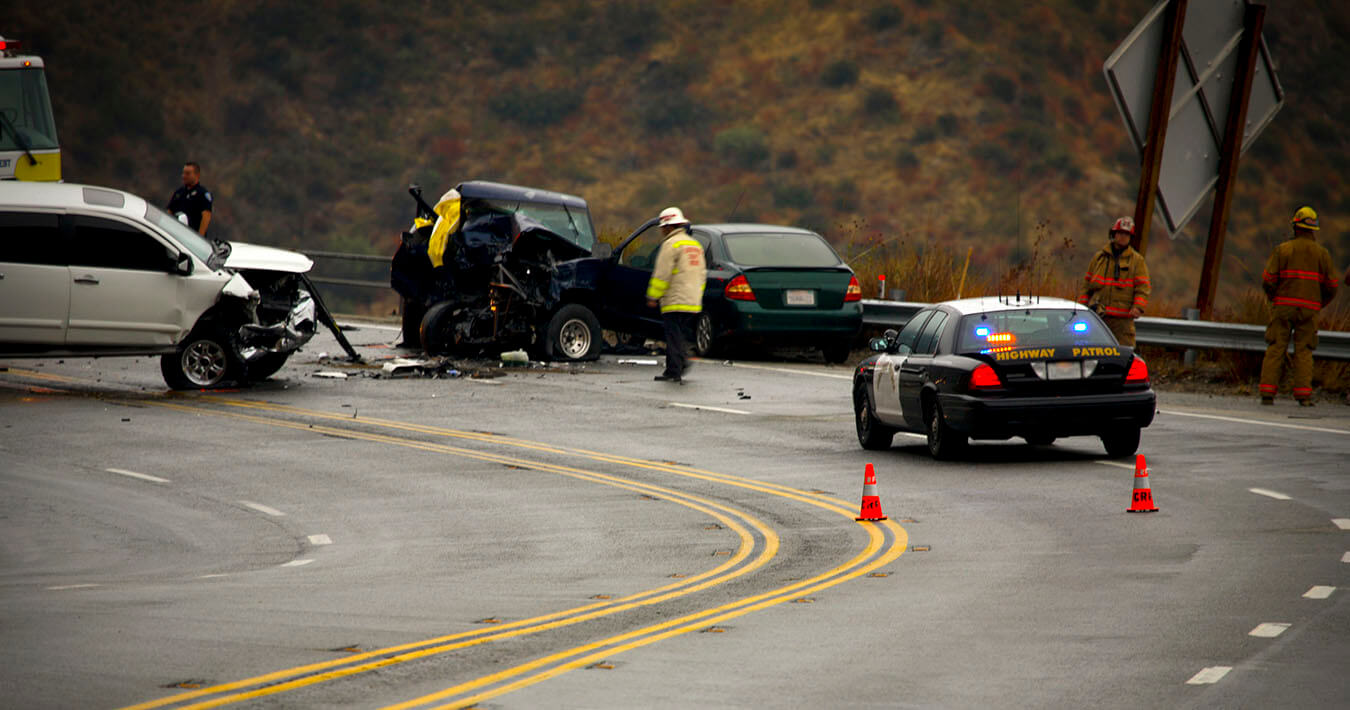Best Accidental Death Life Insurance


Edited by
Lisa A Koosis
Medical Claims Specialist


Written by
Brian Greenberg
CEO / Founder & Licensed Insurance Agent
Last updated: April 12th, 2023

Edited by
Lisa A Koosis
Medical Claims Specialist
Table of Contents
| Company | Info | Rating | Recommendation | Quote |
|---|---|---|---|---|
Recommended. | ★★★★★ Assurity Reviews | For those aged 18 - 70 years looking for an inexpensive additional policy, or for those that cannot qualify for a traditional policy. Full benefits from day one. | Go | |
| Recommended. Agent assistance is required Guaranteed approval. No health questions. Up to $100,000 in coverage. Brochure | ★★★★★ Gerber Reviews | For those aged 19 - 60 years looking for an inexpensive additional policy for both spouses. Full benefits from day one. | Go |
This type of coverage is the most straightforward of all life insurance policies. Accidental death and dismemberment insurance will cover your death if it’s solely the result of an accident. It will also pay out various amounts of the benefit if you obtain an accident-based disability that causes loss of limb, eyesight, or ability to move.
Some life insurance companies will also double the amount of coverage if the accidental death occurs on a commercial carrier, such as an airline or a train.
Because this type of insurance pays in the event of death due to an accident, not health-related death, it also becomes much more affordable. At the same time, it makes it a great alternative to life insurance for those who can’t qualify due to health problems, or other reasons.
Since AD&D insurance is a type of whole life insurance, there is no predefined policy end date. As long as you make the payment, your policy will remain in force. This also means that your price will never increase, and your coverage will never decrease.
The insurance company will conduct a thorough investigation into the cause of death. As long as the death isn’t due to health-related issues, the policy will most likely payout.
| What is covered: | AD&D Insurance | Life Insurance |
|---|---|---|
| Death due to illness or disease | No | Yes |
| Death due to old age | No | Yes |
| Death due to an accident | Yes | Yes |
| Death due to murder | Yes | Yes |
| Loss of a finger, toe, or other limb | Yes | No |
| Coma or paralysis after an accident | Yes | No |
| Long-term health effects due to an accident | Yes | No |
| Death due to suicide | No | No |
Most people can use common sense to guess what the exclusions would be, but a conversation with a licensed True Blue agent will remove any doubt.
In the simplest terms, any death that is not from natural causes (which includes disease), will usually fall into this category. This includes but is not limited to:
When it comes to inexpensive life insurance, this type of coverage is the way to go if you’re looking for the most cost-effective protection.
In fact, an accidental death policy will probably cost less than what you pay for Netflix or an Amazon Prime membership every month.
Since accidental death insurance covers death due to an accident, it eliminates the need for health questions or exams. As a result, this dramatically reduces the policy cost.
These rates are calculated for an individual in the same health and state. The only difference is that for life insurance, the rates are calculated for a 20-year term. Since AD&D is a type of whole life insurance, there is no term.
| Age | Coverage | AD&D Insurance | Term Life Insurance |
|---|---|---|---|
| 20 | $50,000 | $5.23 | $9.49 |
| $250,000 | $25.52 | $20.25 | |
| 30 | $50,000 | $5.23 | $8.61 |
| $250,000 | $21.34 | $12.62 | |
| 40 | $50,000 | $5.23 | $11.37 |
| $250,000 | $19.58 | $17.64 | |
| 50 | $50,000 | $5.23 | $21.88 |
| $250,000 | $22.22 | $38.92 | |
| 60 | $50,000 | $5.23 | $50.55 |
| $250,000 | $22.22 | $110.72 |
The prices above are sample prices calculated for non-smokers based in California in excellent health. To calculate your rates, get an Accidental Death insurance quote or term life insurance quote.
Accidents are the fourth leading cause of death in the U.S. today. That’s a shocking number of fatalities occurring because of accidents.
According to the Centers for Disease Control and Prevention, accidents account for over 130,000 deaths each year in the United States.
Accidents come in all shapes and sizes, but it’s typically defined as a sudden event that is not planned or intended, causing injury or death. It’s an unforeseen and sudden physical situation you can’t control.
Death from accidents involving motor vehicles, machinery, unintentional poisoning, slip and falls, suffocation, choking, drowning and more are usually covered by accidental death benefit insurance.
Therefore, if you’re in a car, bus, or airplane crash; or if you are hit by a car while crossing the street or you fall off a ladder while trying to fix your roof and you die as a result—these are considered accidental deaths that would be covered.
It’s quite simple, really. You buy a contract with an insurance provider. That contract binds you, the insured, to pay the insurance provider a monthly fee.
In return, the insurance provider pays you, or your beneficiaries a lump sum of cash if conditions are met. Such conditions are if get severely injured, lose a limb, or die due to an accident.
Accidental death insurance is very similar to life insurance, apart from a few differences.
There are two important, but simple differences, between AD&D and life insurance.
Since AD&D is a type of whole life insurance, it lasts your entire life. That means, no predefined end date (or term). This is important because if you compare AD&D to term, the cost is not that much different. And term life insurance covers more than Accidental Death insurance does.
But, term life insurance has a predefined end date. That means that once your policy ends, say 10, or 20 years from now, you’ll have to apply for a new life insurance policy. And this time, it will cost significantly more.
AD&D on the other hand, will not expire unless you stop paying the policy. So while the difference between AD&D and term life insurance is somewhat minimal while you are young, it becomes much larger as you grow older.
You could raise the fact that the above example is of an AD&D policy, versus a term life insurance policy, which may not be an apple to apple comparison, as AD&D is a type of whole life insurance.
So let’s look at AD&D compared to the standard cash-value building whole life insurance policy.
The cost of an AD&D policy compared to a cash-value whole life insurance policy are far lower. A 30-year-old male could get $250,000 in AD&D coverage for about $21/month. That same person would pay roughly $123/month for the same amount of coverage in a cash-value whole life insurance policy.
Life insurance covers just about any cause of death, with some rare exceptions. AD&D however, covers most causes of death, except due to age, or health. At the same time, life insurance does not cover loss of limbs or injury due to an accident where AD&D does.
Many people ask if these policies are worth the expense. It’s true that the risk of dying due to an accident is lower than due to health. Especially so if you are in your 40’s or older. But given the low cost, it’s probably worth it. Not just as a standalone policy, but even as an addition to your life insurance policy.
For example, a 42-year-old man in Georgia could get a $50,000 accidental death and dismemberment policy for about $60 per year. Even if he kept the policy in force up to age 100, his overall cost for this protection would only be about $2,400.
If at any point he would get seriously hurt or die due to an accident, he or his beneficiaries would receive a payment of up to $50,000. We say up to since the payment due to an accident can fluctuate based on the severity.
AD&D policies offer a potentially attractive return on investment. And because accidents can happen anytime, this type of coverage works for just about every person from every walk of life.
Ages 18-25: When it comes to the probability of death, young adults are more at risk for death by accident than by natural causes. Although people in this age group are less likely than older adults to have dependents, the death of a young adult can still have a significant financial impact.
An accidental death policy is an inexpensive life insurance option for covering potential medical bills and final expenses resulting from an end-of-life situation.
Ages 25-35: Many people in this age group are beginning careers and starting families. An accidental death policy provides an extra level of protection. It also ensures the financial certainty of any dependents, all at an affordable rate.
Many employers offer this type of coverage as part of their overall benefits package. But, it’s important to realize that group life insurance policies obtained through the workplace end when employment there ends. So, it can be smart to invest in separate accidental death and dismemberment coverage that’s not part of a job-related benefits package.
Ages 35-55: Accidental death coverage provides a great add-on to an overall financial plan for people in this age group. That’s especially true for those who travel frequently. Although death while traveling may be a rare event, it does happen.
Investing an extra couple of dollars a month to cover the increased costs related to an accidental death may make sense.
Ages 55+: As you grow older, life insurance can become quite expensive. If you are on a limited budget, these policies provide coverage at a fraction of the cost of life insurance. Although the coverage would be limited to accidental death or dismemberment. Your overall health will also have no impact on the price.
These types of policies work well for everyone — even those who already own a life insurance policy.
Many companies, and unions, offer accidental death and dismemberment insurance through group life insurance. It’ll most likely just cost you a few dollars a month. Just keep in mind that you quit that job, you’ll also lose the insurance.
If you already own – or are getting ready to buy a life insurance policy – there’s a good chance that the policy offers an accidental death rider. Put simply, a rider is an additional benefit of the policy. Sometimes it’s free, sometimes it costs a bit extra, depending on the insurance provider. If you get accidental death and dismemberment through a rider, it saves you the hassle of having to apply for it separately. Additionally, it will be included in your monthly premium automatically.
You can of course buy an accidental death policy as well, even if you already have it through work or through a rider. The application is extremely straightforward as your health has no impact on the cost.

Brian is the founder and CEO of Insurist and carries Life, Health, and Property & Casualty licenses in all 50 U.S. states. Since 2013, Brian has been a member of Million Dollar Round Table, a designation for the top 1% of financial advisors worldwide. Brian has been featured in Yahoo! Finance, Money.com, Entrepreneur.com, Life Happens, Forbes, MSN, and Good Financial Cents. Brian’s goal is to show customers the best products, the quickest answers to their questions, and provide expert advice.

Lisa worked as a medical claims specialist for five years, adjudicating claims, developing appeals training programs and liaising with insurance auditors. As a full-time freelancer, she now completes work that includes writing and fact-checking life and health insurance content for a variety of online publications.